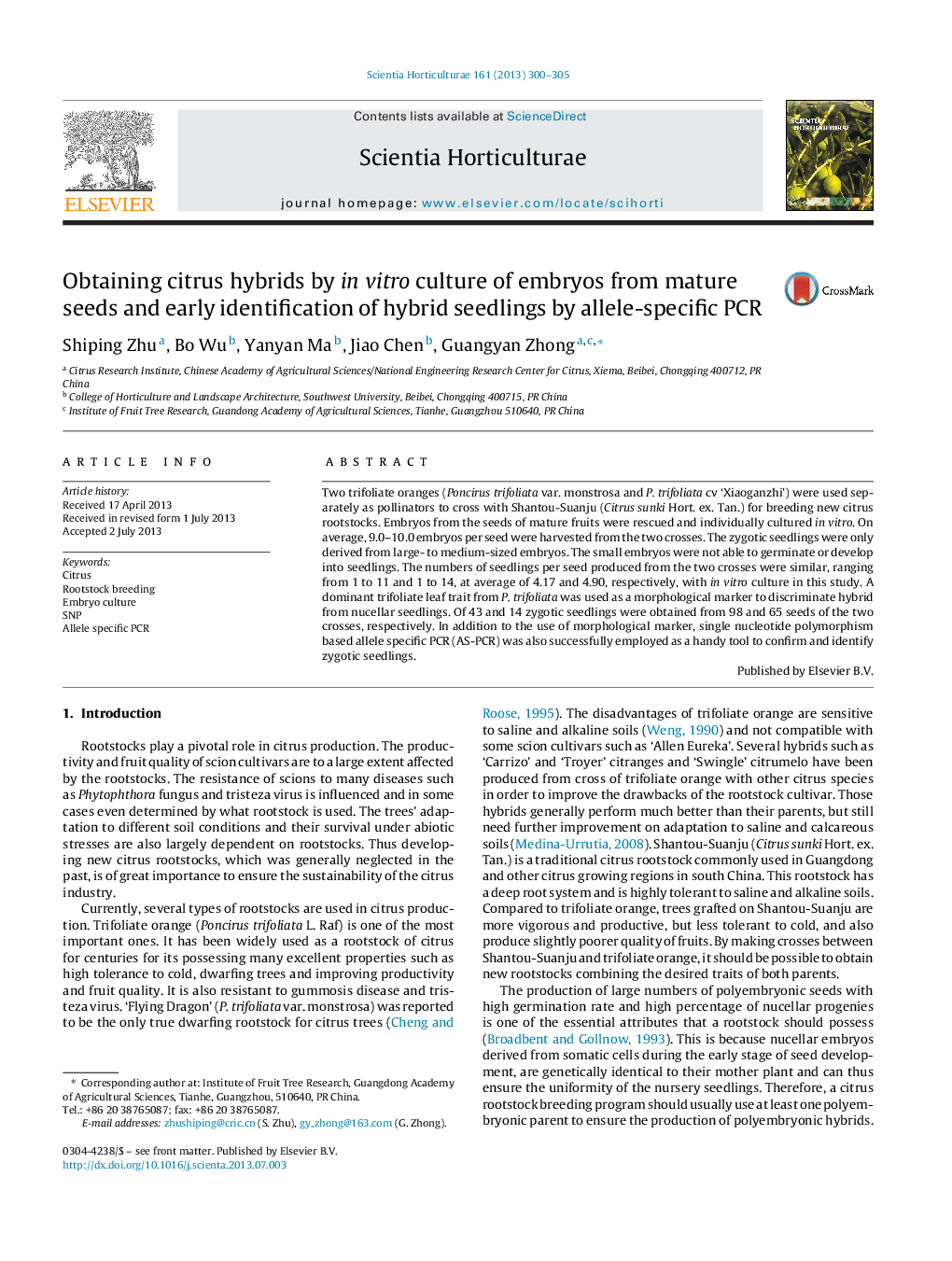| کد مقاله | کد نشریه | سال انتشار | مقاله انگلیسی | نسخه تمام متن |
|---|---|---|---|---|
| 4567174 | 1628837 | 2013 | 6 صفحه PDF | دانلود رایگان |

• We use two trifoliate oranges and one mandarin to breed new citrus rootstocks.
• Hybrids were obtained by in vitro culturing the individual embryos of mature seeds.
• Polyembryonic level of the hybrids was evaluated.
• Compared the frequencies of hybrid seedlings with embryo rescue at young stage.
• Allele specific PCR was employed to confirm and identify zygotic seedlings.
Two trifoliate oranges (Poncirus trifoliata var. monstrosa and P. trifoliata cv ‘Xiaoganzhi’) were used separately as pollinators to cross with Shantou-Suanju (Citrus sunki Hort. ex. Tan.) for breeding new citrus rootstocks. Embryos from the seeds of mature fruits were rescued and individually cultured in vitro. On average, 9.0–10.0 embryos per seed were harvested from the two crosses. The zygotic seedlings were only derived from large- to medium-sized embryos. The small embryos were not able to germinate or develop into seedlings. The numbers of seedlings per seed produced from the two crosses were similar, ranging from 1 to 11 and 1 to 14, at average of 4.17 and 4.90, respectively, with in vitro culture in this study. A dominant trifoliate leaf trait from P. trifoliata was used as a morphological marker to discriminate hybrid from nucellar seedlings. Of 43 and 14 zygotic seedlings were obtained from 98 and 65 seeds of the two crosses, respectively. In addition to the use of morphological marker, single nucleotide polymorphism based allele specific PCR (AS-PCR) was also successfully employed as a handy tool to confirm and identify zygotic seedlings.
Journal: Scientia Horticulturae - Volume 161, 24 September 2013, Pages 300–305